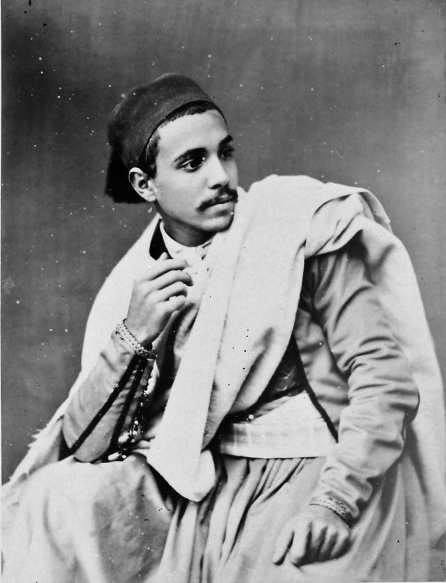Clothing in Africa :: This article needs additional citations for verification. Please help improve this article by adding citations to reliable sources. Unsourced material may be challenged and removed.
African clothing is the traditional clothing worn by the people of Africa. In all instances except rural areas these traditional garments have been replaced by Western clothing introduced by European colonialists.
Clothing in Africa
clothing in Africa and fashion is a diverse topic that is able to provide a look into different African cultures. Clothing varies from brightly colored textiles, to abstractly embroidered robes, to colorful beaded bracelets and necklaces. Since Africa is such a large and diverse continent, traditional clothing differs throughout each country.
For example, many countries in West Africa have a “distinct regional dress styles that are the products of long-standing textile crafts in weaving, dyeing, and printing”, but these traditions are still able to coexist with western styles.
A large contrast in African fashion is between rural and urban societies. Urban societies typically are exposed more to trade and the changing world, while it takes more time for new western trends to get to rural areas. People in Africa wear traditional cultureal clothing
European influence is commonly found in African fashion as well. For example, Ugandan men have started to wear “full length trousers and long-sleeved shirts”. On the other hand, women have started to adapt influences from “nineteenth-century Victorian dress”. These styles include: “long sleeves and puffed shoulders, a full skirt, and commonly a colorful bow tied around the waist”. This style of dress is called a busuti.
Another popular trend is to pair a piece of modern western clothing, such as T-shirts, with traditional wraps. Rural communities have also started to incorporate secondhand clothing/western clothing into their everyday style too. For example, rural Zambian women have started to combine “secondhand clothing with a single two-yard length of chitengi that was used as a wrapper over the dress”. With the globalization of western clothing influence from urban to rural areas, it is now become more common to find people wearing a variety of styles of clothes. (clothing in Africa)

In Northeastern Africa, particularly in Egypt, styles of traditional women’s clothing have been influenced by Middle Eastern culture, this can be exemplified by the simply embroidered Jelabiya which are similarly worn in the Gulf states. The Djellaba (worn in Northwest Africa) shares similar properties with the Grand boubou, the Dashiki, and the Senegalese kaftan. In Nigeria, women wear head ties.
In Sahelian Africa, the dashiki, Senegalese kaftan, and the grand boubou are worn more prominently, though not exclusively (the Bògòlanfini, for instance, is worn in Mali). The dashiki is highly stylized and is rendered with an ornate V-shaped collar. In contrast the grand boubou is simpler, even more so than the djellaba, though the color designs reach impressive proportions, especially among the Tuareg, who are known for their beautifully dyed indigo robes.
In East Africa, the kanzu is the traditional dress worn by Swahili speaking men. Women wear the kanga and the gomesi.
In Southern Africa distinctive shirts are worn, like the long dresses they wear. For instance, South Africa is known for the Madiba shirt, whereas, Zimbabwe is known for the safari shirt.
In the Horn of Africa, the attire varies by country. In Ethiopia, men wear the Ethiopian suit and women wear the habesha kemis. In Somalia, men wear the khamis with a small-cap called a koofiyad.
Used western clothing
Main articles: Mitumba (clothing) and Global trade of secondhand clothing
There exist non-profit organizations in all western societies that sell used clothes to for-profit companies in Africa. These “white man’s clothes” are quite common in some parts of the continent. This used clothing is called Mitumba in some areas and is surrounded by some controversy. Critics point to it as a threat to local clothing manufacturers and complain that it exploits consumers. Others[who?] argue that this used clothing provides useful competition for often expensive and low-quality local products.
Before charitable organizations started importing used clothes, cheap cotton clothing from Asia was the biggest import of cotton clothing to Africa. Soon, western charitable organizations began to send used clothing to African refugees and the poor.[2] Countries in sub-Saharan Africa are one of the top destinations for the import of used clothing. Although used clothing was commonly sent for the lower class communities, it is now commonly found within other social classes in Africa.
Secondhand clothing is found in everyday apparel for many people, regardless of their class difference. This is because there was always a variety of clothing and it was a good price. However, typically in Muslim regions, such as North Africa, do not partake in this trade due to religious reasons. Instead, Islamic African men wear a long flowing robe and women wear hijab along with a dress covering all skin.
Although these clothes are often donated by organizations in belief that people in rural and poor areas will be obtaining them first, the people who live in the cities get the clothing first. Since urban areas are full of fast and changing lifestyles, they are able to adapt to the change in cultures, such as change in tradition dress. These foreign clothes often are drastically different than what people are used to in more rural parts of Africa. People may believe that they are being insulted by being given something that they believe to be old, tattered and dirty. Generally, it seems that most countries have adapted to the use of secondhand clothing and have used it to their advantage.
Impacts of Secondhand Clothes
clothing in Africa :: The second-hand clothing industry has left both positive and negative impacts within African society. An impact that one would commonly not think of is the resale of imported western clothing. South Africa, among other nations, has created legislation of imported/donated good in order to curb the resale of the donated items. Côte d’Ivoire, Nigeria, Kenya and Malawi had to completely ban the importation/donation of second-hand clothes in order to try to control the resale.[1] Another negative impact is that is commonly argued is that the importation of western clothing is leaving a negative impact on local clothing producers.
However, the opposite side of the argument believes that the high importation creates new jobs for the people living in the port cities. These jobs include the sorting, washing, re-tailoring and transporting of the clothes to the markets. There is a report that revealed that “50,000 people are employed in jobs relating to secondhand clothing in one market in Kampala, Uganda”.
clothing in Africa :: Another impact that could be argued either negatively or positively, is that secondhand clothing has become more common to wear than classic African textiles. In Zambia, secondhand clothing has basically become a new type of traditional clothing to them. Zambian cities are full of used clothing markets, which are extremely successful. Since Zambians have been wearing more western clothes traditional textiles and crafts have seemed to become scarce.
While Senegal and Nigeria prefer to “follow long-standing regional style conventions, dressing with pride for purposes of displaying locally produced cloth in “African” styles”.[1] It can be argued that Zambia is losing a piece of its culture by wearing only western styles or even that people in Senegal and Nigeria are not open-minded enough to try to incorporate western styles into their fashion. These differences in beliefs in used clothing help make African fashion a diverse topic.
From Wikipedia, the free encyclopedia




















